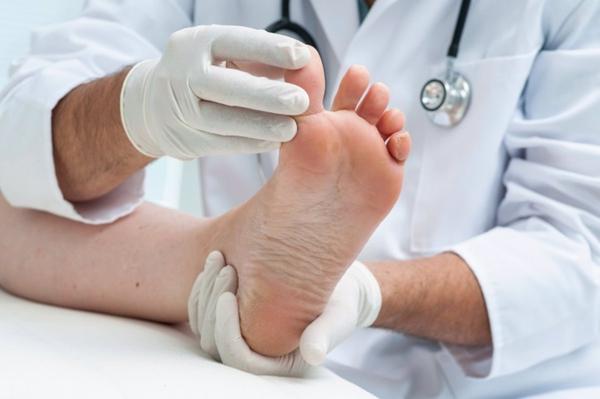
Madrid, Aug 4.(Infosalus) -
Calluses and hardness are hardening of the outermost epidermal layer of the skin and feet do not have to have them.Its existence is indicative that something happens to the foot.When it occurs, it is for an internal pressure, a bone or joint that presses in excess, or external, by a footwear or soil that when impacting on the foot damages it.
As explained to Infosalus José Manuel Ogalla, president of the College of Podiatrists of Catalonia and professor at the University of Barcelona, these are keratopathies in which the skin cells then become hard and the skin becomes thicker either by abone prominence, a defect on a finger or walk badly and exert more pressure on one part of the foot.
These skin or keratopathies problems are classified into three main types: helome, skin pathology with nucleus (it looks like an eye);the hardness, thickening of the outer layers of the skin (hyperkeratosis);and the tiloma, a small hardness of the skin, which is an intermediate version in extension.
The symptoms are visible on the foot, the skin becomes more dry, thicker and takes a yellowish color when the epidermis cells keratinize.The hardness can cause pain and when it comes to a helome, who suffer from it, they refer to having the feeling of having a stone stuck.In addition, around hardness there is an inflamed, reddened, erythematous area due to skin change.

"We are all predisposed because footwear influences, if it is rigid, narrow, unatomic, friction and frictions occur.In addition, if there are deformities such as hammer fingers or bunions there are internal bone pressures against the skin.If the tread is not neutral but the pressures are accentuated on the external or internal part of the arc (prone or supine tread) these effects intensify, "Ogalla explains.
There are also works or hobbies that can take many hours standing or with a certain footwear, as in the case of safety and rigid shoes that are used in certain trades.
Complications can occur if there is any systemic alteration such as diabetes or circulatory problems.An infection or bursitis can occur, a liquid accumulation below the calluses that causes an abscess.This can be more common in adults with diabetes or arteriosclerosis and can, in extreme cases, lead to a severe infection that even requires the amputation of the foot.
When to go to the podiatrist?
"The sooner the better, since the hardness are a consequence of another problem, if we remove the hardness or the callus with blades, files, drugs without recipe, it will appear again and aggravated since the cause must be sought," says Ogalla.
Therefore, the teacher points out that when a hardness or silence is detected, you have to go to the podiatrist to do a study of why it is there."The calluses are removed but the cause is also corrected so that it does not reappear because if we only remove it, we aggravate the problem".
Thus, the steps that the podiatologist will follow will be:
* Assess the type of calluses, if it is a hardness, helome or tiloma, something that is determined among other aspects by the thickness that the skin takes.The hardness is treated with a scalpel leaf and moisturizing creams are recommended to restore softness and elasticity to thick, hard and unleashed skin.
* Conduct a study of the area, if it is located on the plant or the back, etc..
* Determine the cause, if it is in the back of a claw finger you have to examine whether this finger is still flexible, reducible or not and establish a treatment plan that can go through preparing individualized templates or silicones or even bone defect surgerythat cause hardness.